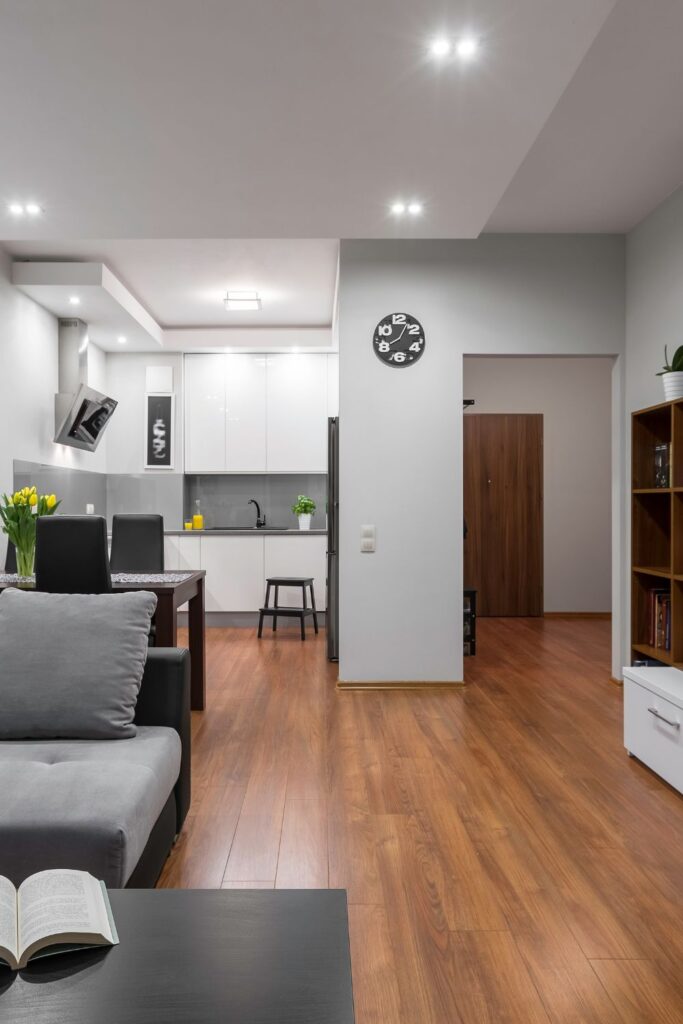Avoid common home decor mistakes in small spaces. Learn design strategies, practical tips, and expert-approved solutions to maximize your tiny home.
Decorating a small home or apartment can feel like a never-ending puzzle. You want it to look stylish and cozy, without making it feel cramped. The truth is, many well-meaning decorating choices actually shrink a space visually and functionally.
Table of Contents
In this guide, we’ll explore the most common home decor mistakes to avoid in small spaces, and give you actionable tips to help you optimize your square footage while staying on trend.
Why Small Space Design Requires Special Attention
Small spaces are less forgiving of clutter, poor lighting, and misplacement of furniture. According to a 2023 report by Houzz, maximizing vertical storage and opting for multi-functional furniture are two of the most effective strategies for small homes.
Here’s what sets small-space decorating apart:
- Limited floor area means each item must serve a purpose
- Visual balance is critical to avoid an overwhelmed look
- Storage becomes a major design element
Common Home Decor Mistakes in Small Spaces (With Fixes)
Let’s break down the most frequent errors homeowners make when decorating small areas, and what you can do instead.
Overcrowding the Room with Furniture
Mistake: Using large or too many furniture pieces in a limited area.
Fix: Choose compact, modular, or multi-functional furniture like:
| Furniture Type | Recommended Features |
| Sofa Beds | Doubles as seating and guest bed |
| Drop-leaf Tables | Expandable surfaces when needed |
| Storage Ottomans | Provides seating and hidden storage |
| Wall-mounted Desks | Saves floor space and adds functionality |
Pro Tip: Allow 30–36 inches of clearance between furniture to promote flow.
Ignoring Vertical Space
Mistake: Only using horizontal surfaces and ignoring wall space.
Fix: Think vertically! Add:
- Tall bookcases
- Wall-mounted cabinets
- Floating shelves above eye level
- Ceiling-hung planters or lighting
Vertical elements draw the eye upward, making ceilings appear higher.
Choosing Dark or Heavy Colors
Mistake: Using dark paint or decor that absorbs light and makes a room feel smaller.
Fix: Stick to light, airy tones like:
- Whites
- Pastels
- Light grays
- Soft blues or greens
Data Insight: A study from Architectural Digest notes that light colors can increase the perceived size of a room by up to 30%.
Not Using Mirrors Strategically
Mistake: Overlooking the power of mirrors to expand visual space.
Fix: Position mirrors across from windows or light sources to reflect light and create depth.
- Use large framed mirrors as wall art
- Try mirrored furniture for double-duty design
- Hang multiple smaller mirrors in a grid
Blocking Natural Light
Mistake: Placing furniture in front of windows or using heavy curtains.
Fix: Let the light in:
- Use sheer or linen curtains
- Rearrange furniture to expose windows
- Choose light-filtering roller shades for privacy and brightness
Natural light is a small space’s best friend.
Skipping Scaled Decor
Mistake: Using overly large artwork or ignoring the scale of accessories.
Fix: Scale decor to the room’s size:
| Item | What to Do |
| Art Pieces | Group small frames or use mid-size |
| Rugs | Choose rugs that define zones |
| Lighting | Use sconces or slim-profile lamps |
| Plants | Opt for tall, narrow planters |
Proper scale keeps the room feeling proportional.
Overusing Open Storage
Mistake: Relying solely on open shelves, which can look cluttered fast.
Fix: Combine open and closed storage to maintain balance.
- Use decorative boxes or baskets on open shelves
- Store daily items in closed cabinets or under-bed drawers
- Install under-sofa storage bins for hidden utility
Forgetting About Lighting Layers
Mistake: Depending only on overhead lights.
Fix: Create depth and mood with layered lighting:
- Ambient lighting: Ceiling or wall-mounted lights
- Task lighting: Desk lamps, reading lights
- Accent lighting: String lights, LED strips
A layered lighting plan enhances usability and ambiance.
Cluttered Flooring and Wall Space
Mistake: Filling every available space with decor or furniture.
Fix: Embrace negative space. Leave areas open to let the room “breathe.”
- Avoid floor-to-ceiling shelves unless necessary
- Keep entryways clear of unnecessary items
- Use minimalist design principles
Visual Comparison: Before vs After Clutter-Free Design
| Feature | Before (Cluttered) | After (Optimized) |
| Floor Area | Crowded with rugs | Clear pathway |
| Wall Decor | Busy gallery wall | One large art piece |
| Furniture Layout | Tight arrangement | Open walking paths |
Expert Tips to Make Small Spaces Feel Bigger
If you want to make the most of your home, use these trusted strategies:
- Use furniture with exposed legs to create openness.
- Go for glass or acrylic tables to minimize visual weight.
- Install wall-mounted lighting to save surface space.
- Zone areas using rugs or furniture placement to give each section a purpose.
Sustainable and Budget-Friendly Fixes
Many mistakes can be corrected without a total overhaul. Here’s how:
| Problem | Quick, Low-Cost Fix |
| Dark Walls | Repaint using light, neutral shades |
| Cluttered Shelves | Add baskets or donate unused items |
| Oversized Furniture | Shop secondhand for compact pieces |
| Lack of Storage | Use under-bed storage bins |
| Poor Lighting | Add plug-in wall sconces or LED strips |
FAQs about Home Decor Mistakes to Avoid in Small Spaces
What is the most common home decor mistake in small spaces?
Overcrowding furniture and ignoring vertical storage are the most common issues.
How can I make a small room feel more spacious?
Use light colors, mirrors, vertical storage, and keep the floor area as clear as possible.
Are open floor plans good for small homes?
Yes, open layouts reduce barriers and increase visual flow, making a space feel larger.
Can large furniture ever work in a small room?
Yes, but only one or two pieces at a time. Keep other furniture slim and space-saving.
What colors should I avoid in small rooms?
Avoid very dark or saturated colors unless balanced by ample lighting and neutral furnishings.
Conclusion
Small space decorating can be a rewarding challenge if you avoid the common pitfalls. From smart storage and light color palettes to vertical thinking and multi-functional furniture, these home decor mistakes to avoid in small spaces are easily corrected with intention and creativity.
With thoughtful planning, even the tiniest corner of your home can become your favorite spot. Start small, scale smart, and decorate with purpose.


